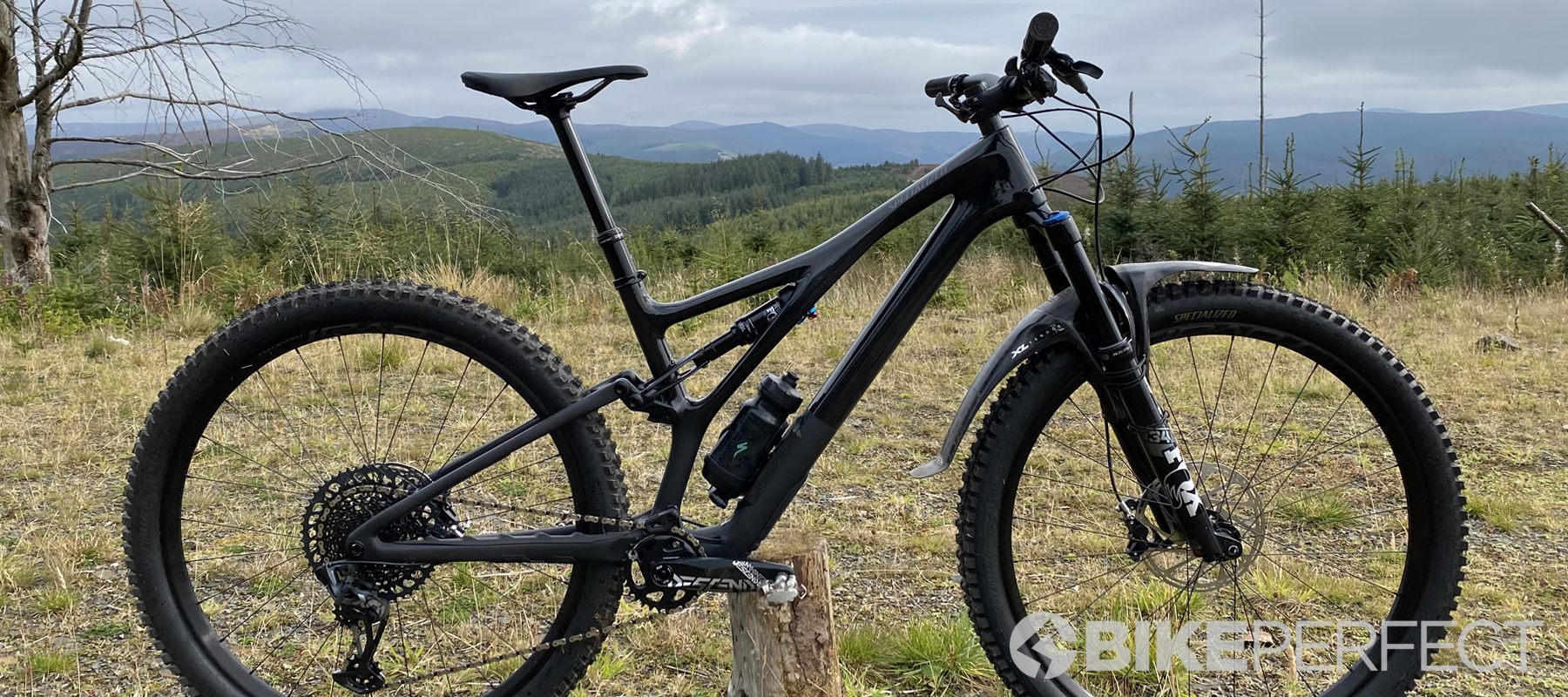Bike Perfect Verdict
Lighter weight and revamped geometry is a marked improvement to the Stumpjumper's ride, however, the characteristics of the flex stays limit suspension control on harder-hitting terrain
Pros
- +
Excellent slacker, longer, lower geometry
- +
Flowing frame vibe
- +
Significantly lighter frame
- +
Decent weight
- +
SWAT
- +
Practical, protective details
- +
Sorted kit package
- +
Full size range
Cons
- -
Surprisingly soft under power
- -
Overdamped for most riders
- -
Inconsistent mid stroke
- -
Tires are dry biased
- -
Shorter stem please
Why trust BikePerfect
It’s hard to believe that the Specialized Stumpjumper is 39 years old, yet its ancestry has proven to be consistently popular as it evolves through time. The new ultra-rad, adjustable geometry, seriously sorted Stumpjumper Evo debuted last week for trail pinners and we rode the new standard Stumpjumper at the same time but that’s not such a clear-cut winner.
Design and geometry
While Stumpjumper and Evo used to be based on the same chassis, they’re now totally different bikes. That’s allowed Specialized to pull the Stumpjumper back in quite an old school direction in terms of mission, but throw a lot of new school influences and tech at it.
The ‘Sidearm’ mainframe looks similar to the previous Stumpjumper and the new EVO but it’s totally new 2,420g (S4 size) layup that saves 250g over the previous frame and 330g over the Evo frame (2,750g - complete shock, rubber bumpers, clamps, etc. weights from Specialized). The layup and tube profiles are all specifically tuned to give the same ride vibe for all six sizes. While S1 through S4 frames get a 332mm back end S5 and S6 get a 442mm chainstay.
The big news outback though is that the chainstay no longer has an FSR pivot. That means the 130mm of rear travel is achieved through flexing of the rear stays with a small rocker linkage on the seat tube and a U-yoke mounting directly onto the rear of the Fox DPS shock. An eccentric chip in that mount also lets you change the head angle by half a degree and ride height by 7mm. While all carbon frames use the same FACT 11M composite, the S-Works model gets a carbon fiber rocker linkage rather than a machined alloy one, saving 15g. There’s also an alloy version with a conventional rear pivot and no SWAT box that comes in at 3,490g but lets them drop complete bike prices under £2,000.
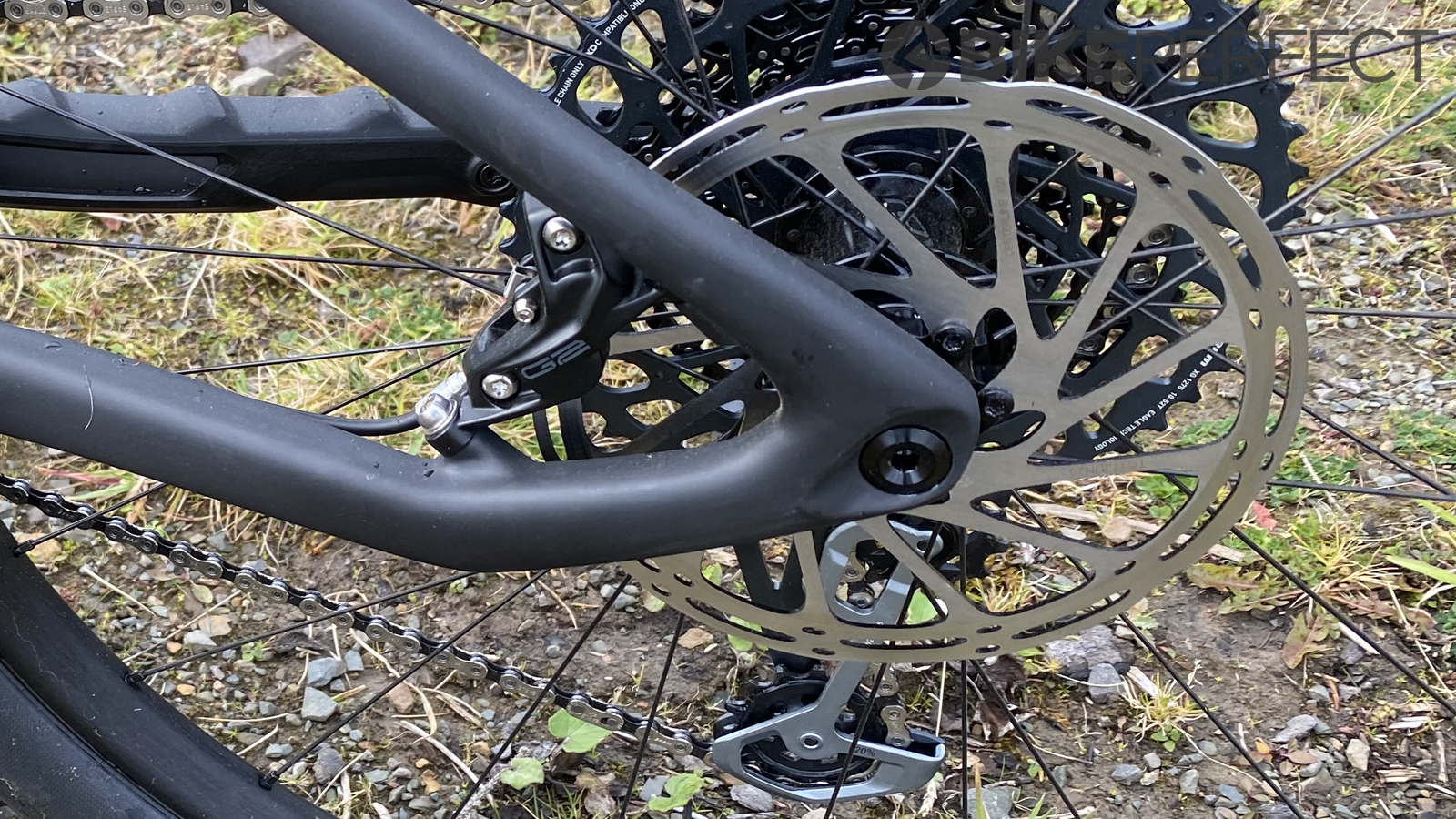
Baseline geometry has been altered dramatically across all models and materials too. After bucking the longer reach trend on the last Stumpjumper Specialized have extended reach by 40mm to 477/482 (our measurements) on the S4 size. The head angle is slackened by 1.5- to 65- or 65.5-degrees while the effective seat angle is steepened to 76- to 76.5-degrees. The bottom bracket is slammed to 333/340 and the short offset 34mm fork pegs the wheelbase at 1228mm for the S4 size.
Specialized has always scored very high on user friendly innovation and even with all the emphasis on weight saving the company has still loaded the Stumpjumper with some great ‘real-life’ features. A full separate molded and wrapped exoskeleton lets them keep frame stiffness and torsion dialed despite the big hole for the super useful SWAT downtube storage hatch under the bottle cage. It’s no bigger than the old SWAT chamber so you don’t get the 650ml bladder of the Evo in there but you do get some fresh new storage sleeves to stop rattling. Internal cable/hose routing is really neat too. The downtube gets thick 3M tape and rubberized belly armor and the chainstay gets big chunky rubber blocks on top and underneath to totally dull chain slap noise. You get a threaded BB too, with a small top chain guide as standard. Tire clearance is slightly less than the previous Stumpjumper but still fine with 2.4/2.5in tires.
- Best trail bike: the best trail mountain bikes reviewed and rated
- Best MTB GPS computers: the best GPS computer for mountain biking
Components and build
We tested the Expert model which comes with a generally really well-judged kit mix for £4,750. A 140mm travel, short offset Fox 34 Performance Elite fork keeps weight down but features a Grip 2 damper for high and low-speed compression and rebound adjust. The DPS rear shock is another weight saving choice and gets a full custom tune to reflect the flex stay rear end. It comes stock with the medium 0.6in volume spacer to make it easy to take progression either way, too.
SRAM X01 gears are toughened up with a Truvativ Descendant alloy crank, which is a very wise move on such a slammed bike. G2 RSC brakes have the full reach and bite point adjustment with a 200mm rotors upfront for extra power. A long stroke X-Fusion Manic seat post does the dropping and 30mm internal Roval alloy rims stop the tires from popping. Tires are Specialized Butcher Grid front and Eliminator rear
Specialized takes care of the 780mm bar, 55mm stem and remote dropper lever business and you get the excellent shorter, broader Bridge saddle. Single collar Deity grips are a really nice contact point upgrade too.
The rest of the range starts with the Alloy at £1,900, Comp Alloy at £2,500 then the Fox Rhythm fork, 12-speed SLX Carbon Comp looks a real bargain at £3,500, then there’s a £6,500 Pro at and then the full SRAM AXS S-Works at £8,750. The S-Works frame is £3,000.
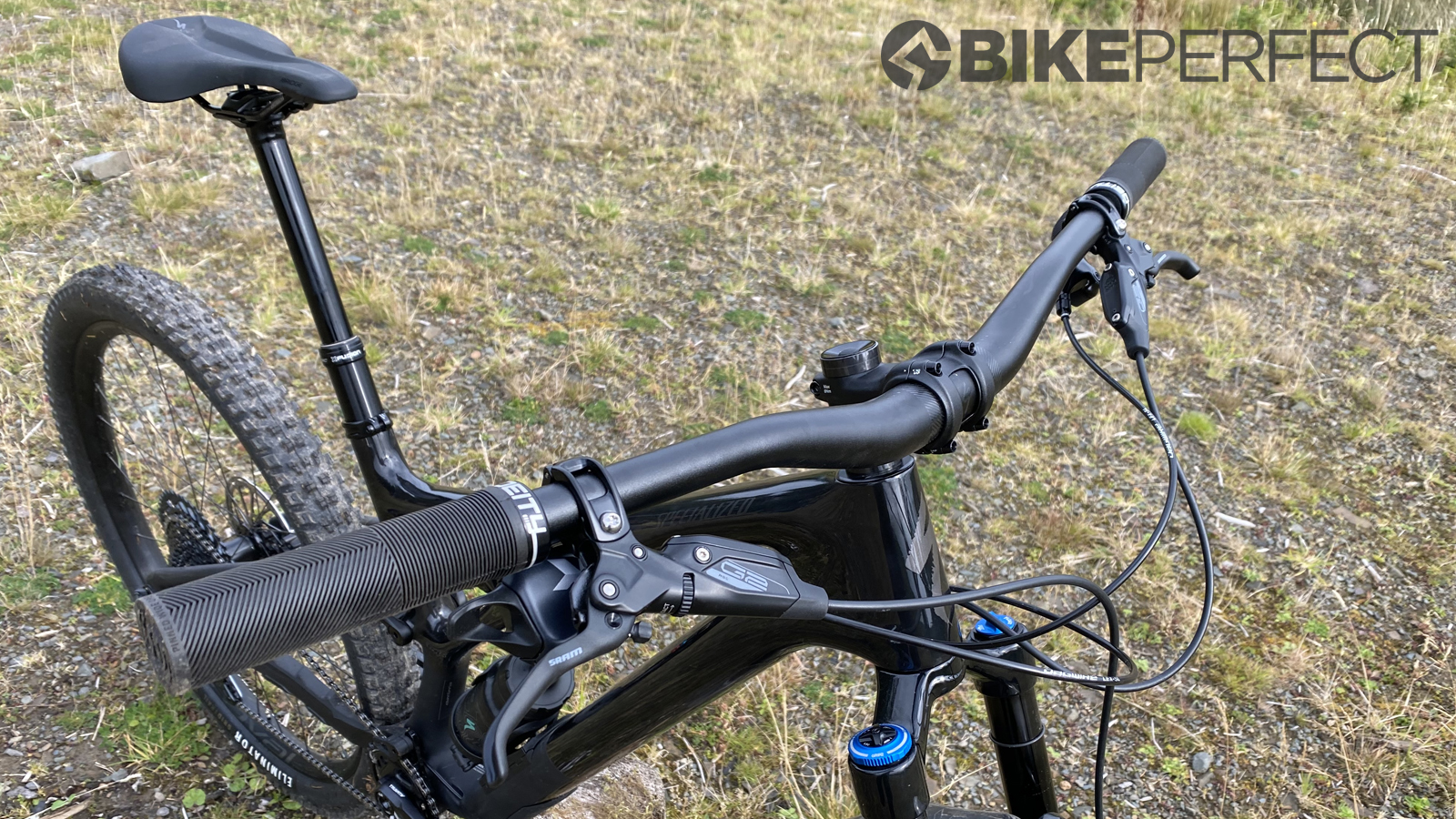
- Best mountain bike forks: the best MTB forks for XC, trail, enduro and downhill
- Best mountain bike tyres: all the top mountain bike tyres reviewed
Ride, handling and performance
Having always struggled with the short length of the previous Stumpjumper the new chassis feels far better straight away. With the shock chocks in low, longer wheelbase and shorter chainstays position, we felt really well centred and poised for ripping the bike through corners, too. We’d certainly fit a shorter stem to give faster reactions to try and catch the plasticky front tire when it inevitably slips in wetter or higher load situations; it's not a deal-breaker for general riding. While it is possible to twist it out of shape with steep descents, heavy cornering loads and a big handful of that 200mm brake rotor the Fox 34 fork generally suits the ride vibe too. Having full compression and rebound damping adjust helps dial in an already impressively controlled stroke, too.
The 30mm internal width Roval rims also fatten the 2.3in tires up to nearer 2.4in width and help stabilize the numb carcass. We’d definitely change rubber to add some real feel and grip to the bike though and a more nuanced carcass would flatter the ride feel even further.
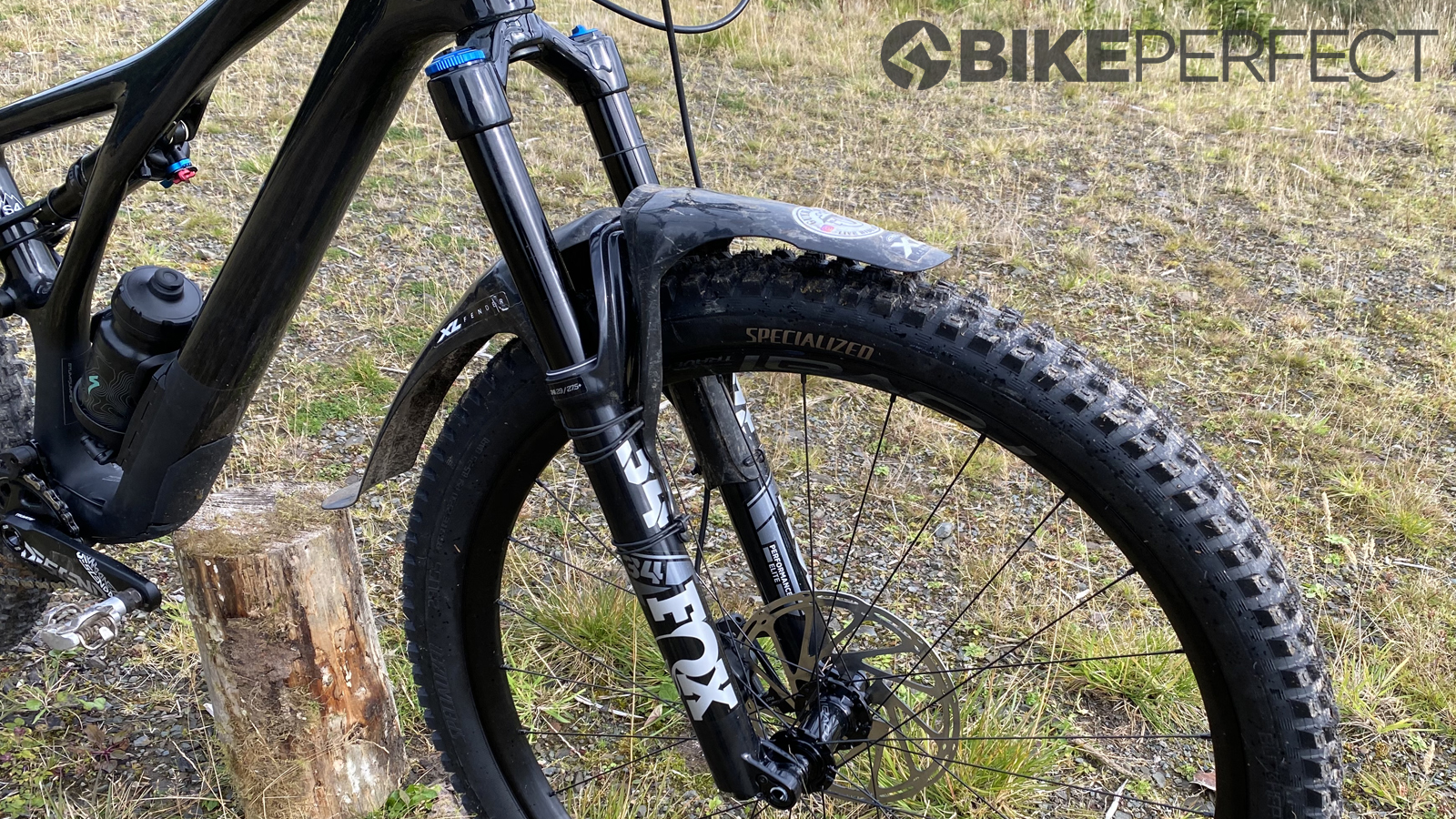
On the subject of vibe, while there’s definitely more flex and twist in the frame it comes across as bright, lively and playful - like a steel or titanium bike - rather than too flexy for comfort. That’s as useful in fighting overall fatigue on long days out as is being able to store all your kit in the down tube and go packless. While 13.63kg is a decent rather than amazing weight for the travel category, picking up the bike, pushing it up a short steep scramble or just weaving and popping it around the car park it definitely feels light, lively and eager.
Specialized has also used a digressive compression damper tune that peaks the low-speed compression ‘platform’ before falling away dramatically. That’s designed to complement/offset the negative spring effect of the preloaded flex stays and give an optimum sensitivity/support balance.
Strangely they haven’t increased the anti-squat and chain-growth characteristics of the suspension kinematic in the same way as they have with the new Evo and Enduro bikes. In fact according to composite and suspension legend Peter Denk - one of the lead engineers on the project - it’s actually more ‘neutral’ than before.
That means noticeable movement even when seated and spinning smoothly and a very obvious bob out of the saddle under power. That means the start of every pedal stroke seems to just get sucked into the shock rather than driving you up the trail. The flip side is worry-free square edge/root/loose surface ‘rock crawler’ traction but for a bike with shorter travel and so much weight saving focus, having such a sedentary rather than sprint focused drive feel seems odd, especially when the new Evo and - even more so - the Enduro now pedal so well. In practice that meant even if we ran the open mode in the firmest of the three micro settings we always reached down to flick the shock into pedal mode very quickly whenever the trail headed upwards or the pace heated up.
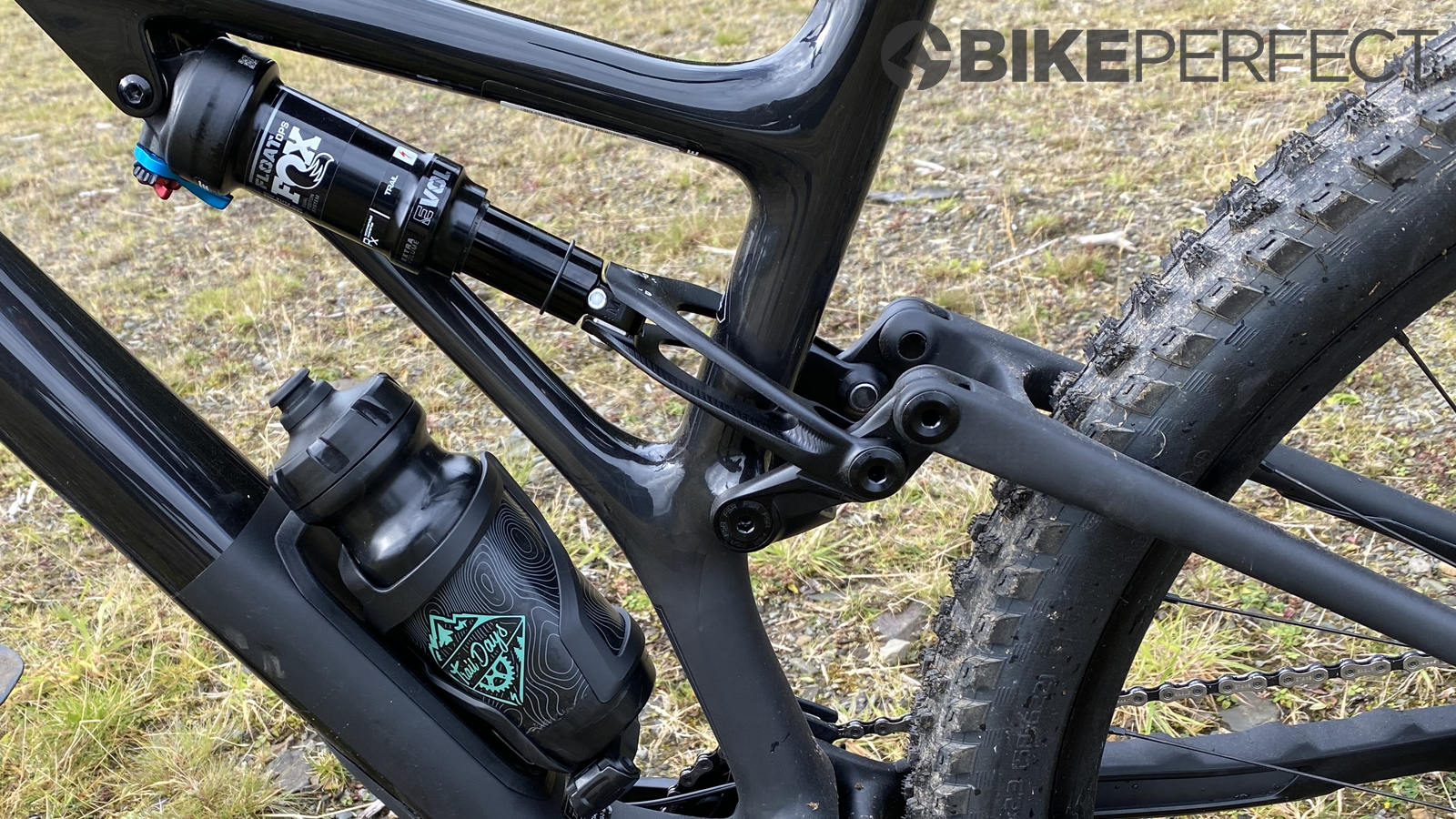
While it flows buoyantly over smoother groomed tracks and less technical singletrack sections in an enjoyably whippy, skippy way, the back end becomes a lot less predictable when things get more challenging. While the compression tune is light and progression only ramps up right at the end of the stroke, Specialized has added a very aggressive rebound tune. This is to combat the extra spring force of the stays as they flexed back from a deep/high load impact under heavy riders. At light to medium pressures for light to medium riders, there’s a definite catch/choke sensation just as the shock starts to return though. While it’s actually a rebound rather than compression issue that can make the back end feel overdamped and blow feet off flat pedals or jerk balance out of an otherwise potentially very poised feel. The mid-stroke is also unpredictable in both directions in a way that flex stay bikes always seem to suffer from however hard the designers and shock tuners try to work around it.
Because the back end is the springy side of flexy rather than compliant and damped tracking across off-camber roots and random rocks can also get sketchy if you’re a more dynamic rider who loads the bike up aggressively. Again things got more predictable and less bouncy on descents when we dialed in extra compression damping and after running through all the DPS micro-adjustments in the open mode we often selected the ‘pedal’ mode for faster descents where we wanted more support and to avoid provoking the rebound by going too deep. There’s also potential to play around in either direction with the compression curve too although we found the default 0.6 spacer set up would just about bottom out with an appropriate amount of sag anyway.
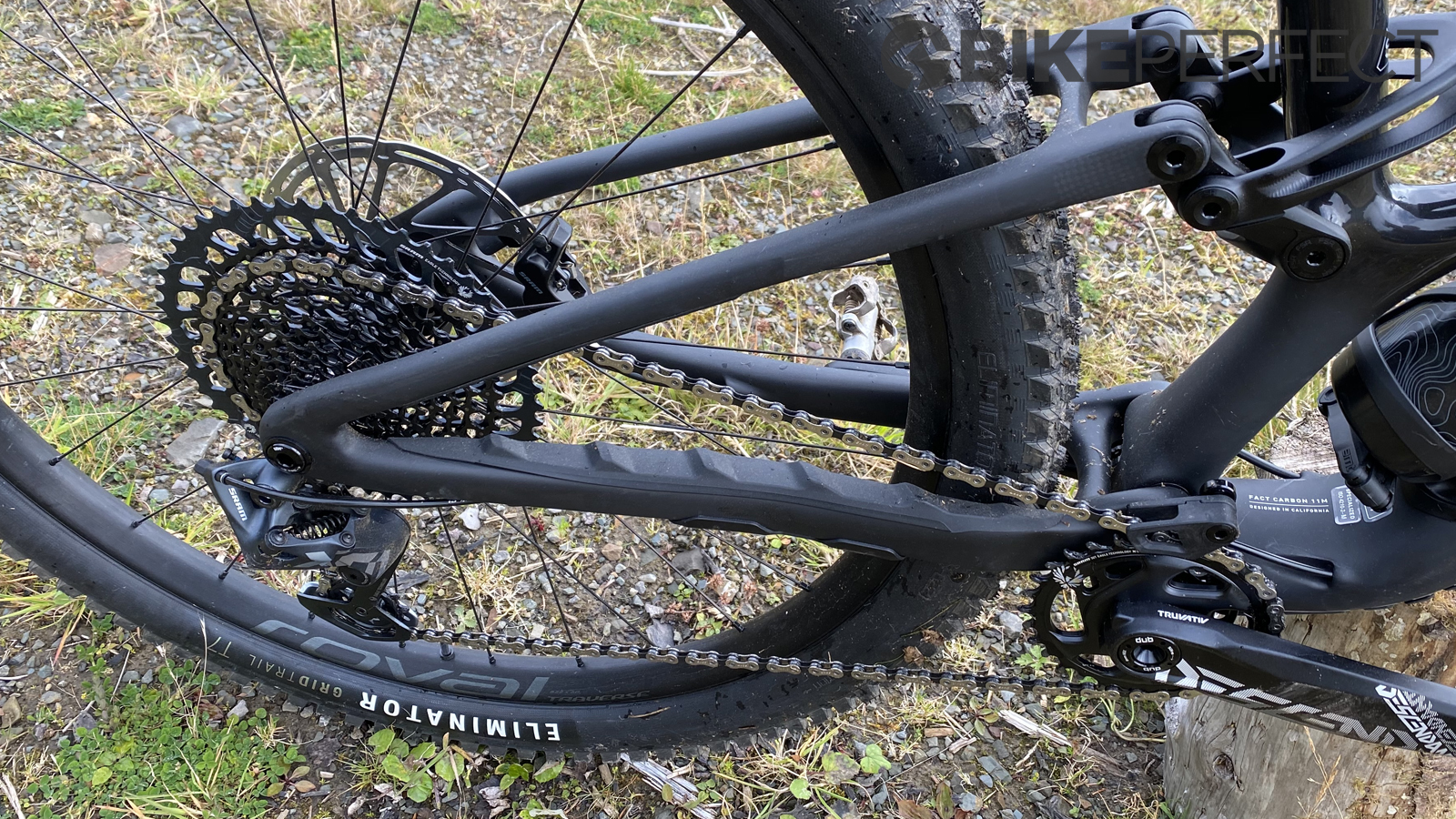
Verdict
There’s a lot to love about the new Stumpjumper. The geometry is great, with a really well-centred feel descending and easy poise when climbing. Less weight is always a bonus too and the fact it’s still fully loaded with the best collection of user friendly features of any bike design is a total win. Riders who like a whippy, skippy and flowy ride that’s smoothly forgiving of long days in the saddle and winds up and over technical climbs with blissfully seamless traction will love the overall ride vibe too.
You could argue that those riders would be better suited to the Epic Evo though which is a full kg lighter (660g in the frame) and only has 10mm less travel. It also has sharper pedaling manners, which is to be expected. What’s surprising is that the Stumpjumper definitely feels more bogged down under power than either the Evo (150mm travel) or the Enduro (170mm travel) unless you add extra shock compression or so much pressure it won’t bottom out. Mid stroke sensitivity isn’t as good as either of those bikes and the whole flexy stay/rebound tune dynamic makes trying to work out what’s happening and find a consistent sweet spot set up very awkward. Having ‘only’ 130mm of travel isn’t an excuse either as there are other bikes in this category with less travel that feel way more controlled when you go hunting for bigger thrills and chasing down long-travel bikes on high speed/high drama trails.
- Best mountain bike helmets: the best MTB helmets from XC, trail to enduro
- Best mountain bike shoes: how to choose the best MTB shoes for you
Tech Specs: Specialized Stumpjumper Expert 2021
- Discipline: Trail/Enduro
- Price: £4,750
- Head angle: 65-65.5 degrees
- Seat angle: 76/76.5 degrees
- Frame material: Hollow Core carbon fiber mainframe and swingarm
- Size: S4
- Weight: 13.63kg
- Wheel size: 29-inch
- Suspension (front/rear): Fox 34 Performance Elite 140mm travel, 44mm offset/Fox DPS Performance Elite 130mm travel
- Components: SRAM X01 Eagle 10-50T 12 speed gearing and shifter. Truvativ Descendant 30T chainset. SRAM G2 RSC brakes with 200/180mm rotors. Specialized Butcher Grid front and Specialized Eliminator Grid rear 29 x 2.3in tires on Roval Traverse 30mm rims. Specialized 780mm bar and 55mm stem, X-Fusion Manic 175mm dropper post, Specialized Bridge saddle.
Test conditions
- Temperature: 10-18 degrees,
- Surface: Gypsy Glen epic XC, rad ‘semi-official’ trails in Cademuir forest and Stainburn red/black.

Guy Kesteven has been working on Bike Perfect since its launch in 2019. He started writing and testing for bike mags in 1996. Since then he’s written several million words about several thousand test bikes and a ridiculous amount of riding gear. He’s also penned a handful of bike-related books and he reviews MTBs over on YouTube.
Current rides: Cervelo ZFS-5, Specialized Chisel, custom Nicolai enduro tandem, Landescape/Swallow custom gravel tandem
Height: 180cm
Weight: 69kg
